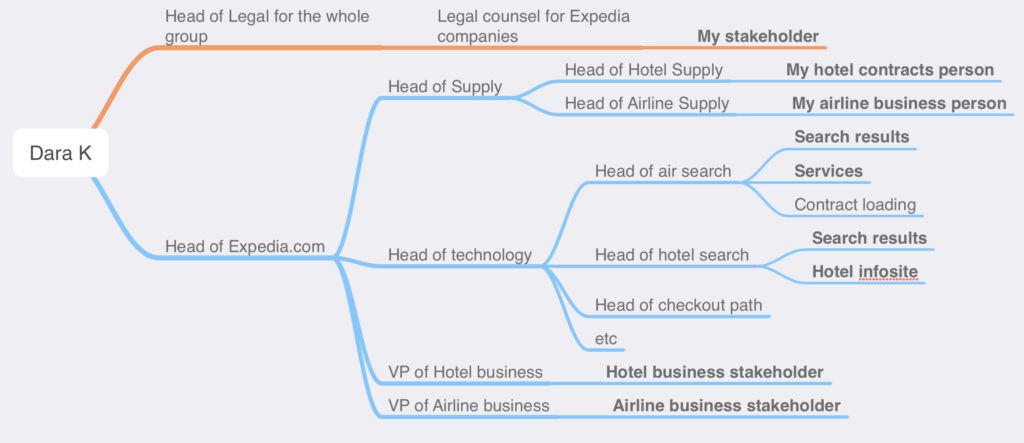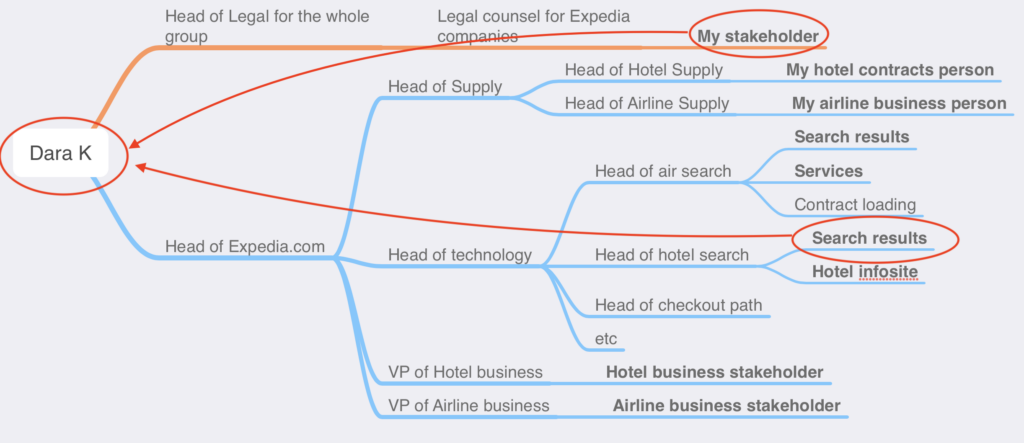(I’m doing a talk at Agile on the Beach and in cutting down the content, I’m finding a lot of blog ideas. As always, drop me a line if you have topics or want to chat or whatever)
I want to offer a different way to think about stakeholder management than we often do. There’s more articles on working with stakeholders than I can count, and I don’t want to repeat all that.
Instead, let’s talk about when none of that seems to work, and what you can do about it.
When I was at Expedia way back in the day, I once had a project I was working on that spanned the company — it had implications for how we sold things, our relationships with suppliers, how we built software — to the point I was inviting 50 (fifty) stakeholders to the monthly demos to check in on our progress.
I did the things you’re supposed to do, and yet I found I was still unable to keep everyone aligned, particularly cross-stakeholder issues, where Person A wanted something and Person B was absolutely opposed. I was running all over trying to broker consensus, persuading, cajoling, conceding, and it didn’t seem to help.
One day I sat down with that list of 50 stakeholders and I put it into a mind map, along with each stakeholder’s manager, who I was probably familiar with by then, and then traced the paths up. I got something that looked like (and this is me doing this in a minute for illustrative purposes of this article, I know it’s wrong)

When I was done I just stared at it for a while. I had to get up and take a walk, for two reasons —
First, I immediately recognized patterns I’d seen — people in some parts of the organization were continually picking similar arguments with their counterparts in other parts. And looking at that chart, I realized the ways in which Executive A and Executive B not being aligned meant that all of their teams were going to be in conflict, forever, and the individual issues, which seemed to rhyme but hadn’t had enough of a pattern for me to suss out how they were connected, weren’t individually important, but there would be an infinite supply of them until I resolved it at the top level — which meant I had to get those execs to line up, and that might mean I do the sales pitch to them personally to get them to align their teams, it might mean I start a communications plan for the execs, or I even that I get someone with the relationships and position to put in a good word for me (it was all of these and more).
Second, I realized that sometimes when two people were debating, it was okay to leave them to it. They’d figure it out and if they went to their mutual boss, it would get settled quickly.
But for other issues, I needed to drop everything if it looked like two other stakeholders were at an impasse. Because

If for some reason the stakeholder from the legal team had a disagreement from the person who worked on how we displayed our hotel search results, and they escalated it up their chains, the only person who bridged those gaps was Dara, head of the Expedia Inc group of companies, and while Dara was known to use the site and send emails to you if he noticed something, you don’t want your project’s petty squabble to somehow get six levels up and be the next thing on their agenda after some company-threatening issue or spirited discussion of a world-spanning merger or whatnot.
I started to prioritize where my stakeholder time by putting these two things together –I could spot when arguments were being sparked in fields of kerosene-soaked tissue paper.
If I knew two people were in conflict over something where their organizations were also in conflict, and where it had the potential to become something where two people you only see on stage at All-Hands meetings are being added to email cc: lines every couple replies, that’s when I’d drop everything to get people together, start lobbying to re-align organizational goals, all of that, and if it meant I had to let another fire burn itself out when it reached their shared manager, that was the right choice to make.
Every major project I’ve worked on since, I’ve included this stakeholder mapping as part of my work, and it’s paid off.
- Map all your stakeholders, and then their managers, until everyone’s linked up. Do they all link up? How far up is that?
- Look for organizational schisms, active or historical. Do issues between any two of those orgs tend to escalate quickly, or are they on good working terms? Are the organizations aligned — is one incentivized to ship things fast and in quantity, while the other’s goal is to prevent production issues?
- Is there work you can do now to minimize escalations and conflict — what’s your executive and managerial communication plan like? Do they need their own updates? Is that an informal conversation, or does it need to something recurring and formal?
If you’re at a large org, this can make your life a lot easier and give your work a better chance at success. And if you’re somewhere smaller, thinking about this on your own scale’s still useful.
Let me know if you try this and it helps.